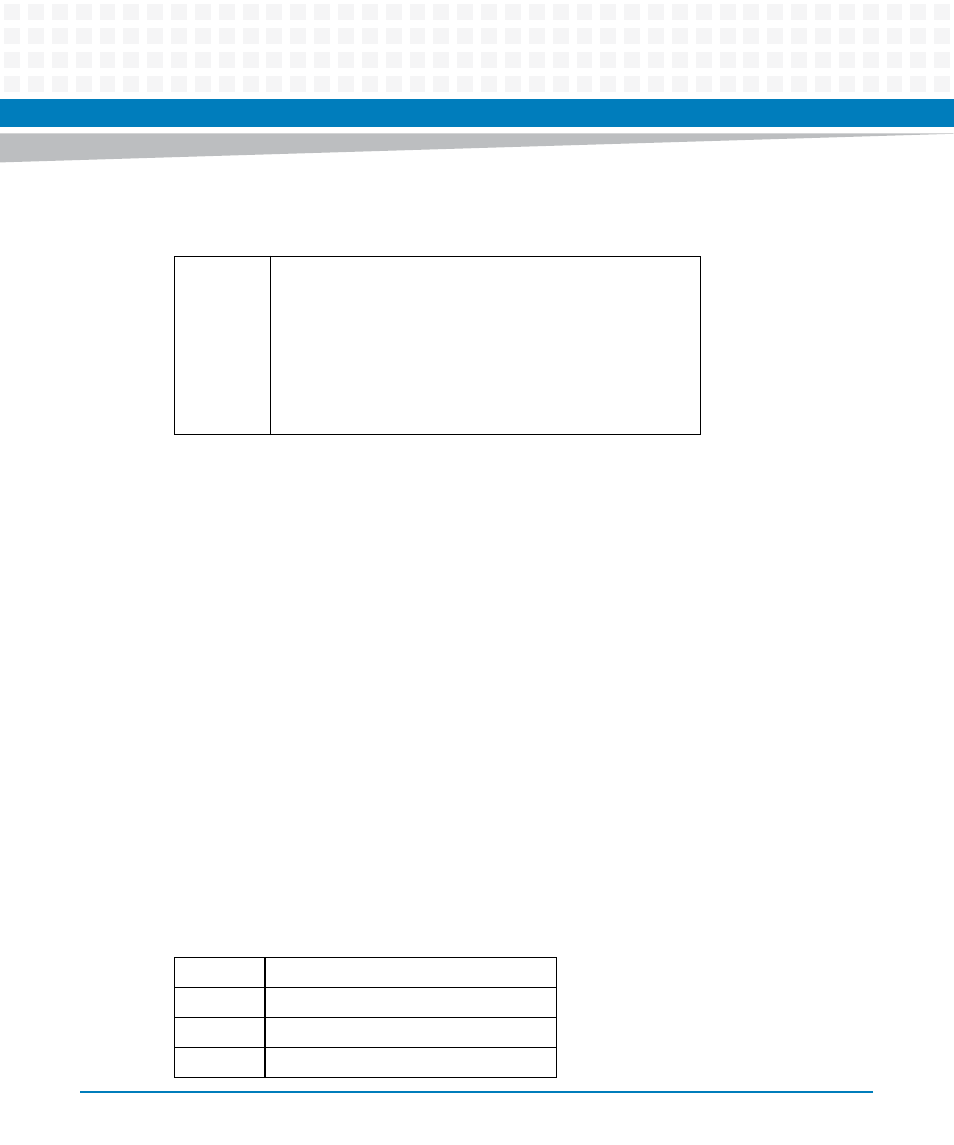4 locate and type detect function (patch panel), Table 4-2, Id_prsnt – Artesyn ARTM-831X Installation and Use (June 2014) User Manual
Page 80: Functional description

Functional Description
ARTM-831X Installation and Use (6806800M76E)
80
The HEALTH signal is buffered by a high current driver and directly routed to the line interface
connectors on the face plate.
The PRI_SBY signal is buffered by a high current driver and directly routed to the line interface
connectors on the face plate.
Additionally this signal is connected to the RxSEL and TxON signals of the framer devices to
allow dedicated control of line termination and transmitter status.
4.3.3.4
Locate and Type Detect Function (patch panel)
For the connections to the patch panel a "locate" and a "type detect" function are available.
These functions are enabled through an "ID_PRSNT" analog signal which is present individually
on each VHDCI interface connector at the face plate:
The ID_PRSNT signals are pulled to a local voltage source, routed via the mezzanine connector
to the IPMC on the base ARTM and connected to the integrated multi-channel ADC. The IPMC
samples the signal and provides the status and LED drive signal as described below (see also
Chapter 5, Patch Panel Detection, on page 99
On a connected patch panel, the ID_PRSNT signal requires an individual pull-down resistor
(Rpp) for patch panel type identification. An RTM side pull resistor of 825 Ohm and 5V rail
result in discrimination levels according to the description below:
PRI_SBY
Purpose is to indicate if blade is primary or standby
Vhigh max = +5V
Vhigh min = +4.5V
Vlow max = +0.2V
I max = 500mA
Set HIGH to indicate one blade is primary
Set LOW to indicate the other blade is primary
Table 4-2 ID_PRSNT
Voltage
Function
5V
No patch panel present
<5V
Patch panel present
4V
E1 patch panel present (Rpp=3k3)
